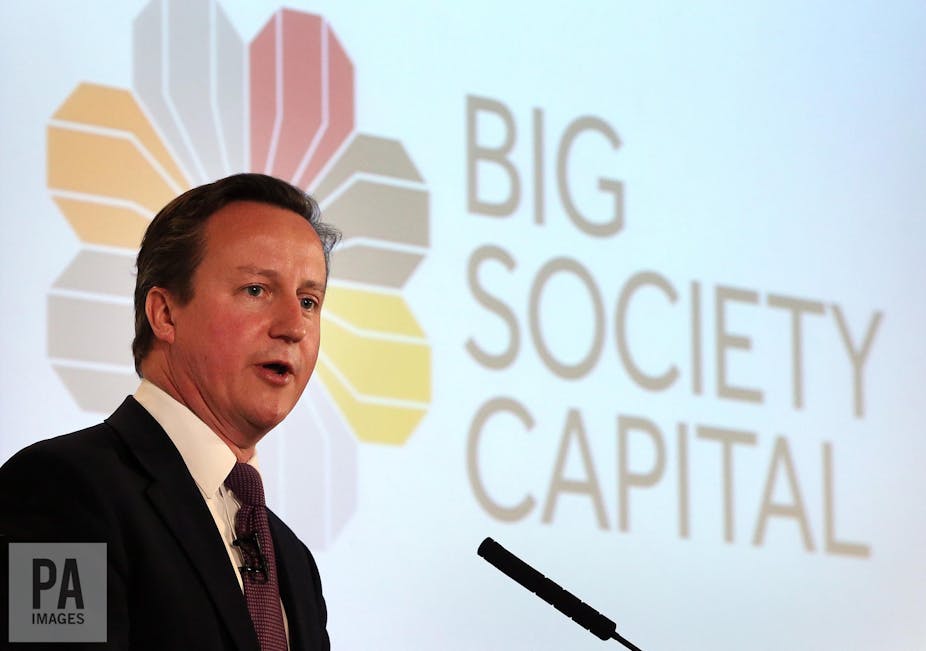Successive UK governments have tried to encourage more people to get into volunteering. Voluntary sector initiatives, such as National Volunteering Week, have also led the charge. But how realistic are such calls to action? Our recent study of continuity and change in voluntary action since the early 1980s found that despite these initiatives, the proportion of the population engaged in volunteering has actually remained stable over time.
National social surveys have investigated whether people carry out formal volunteering through a group with a visible organisational structure, or through informal volunteering – such as giving direct assistance to people who are not relatives.
To assess long-term change, we examined different surveys conducted between 1981 and 2011, whose time-frames overlapped. Within each survey, we found stability in the estimates of people volunteering. There are variations in the survey methods and it is difficult to compare different results, but because the periods covered by these studies overlap, we argue that very little has changed – upwards or downwards – in volunteering rates since 1981.
This isn’t to say that there have been no changes at all. Work on the 2008-09 recession found a clear reduction in the hours committed to informal volunteering during this period, which the authors attributed to the impact of the recession on households. It’s also been suggested there was a post-Olympic “bounce” in volunteering rates in 2012-13 after the Olympic Games in London – although this may simply reflect greater awareness of volunteers due to their high profile during the games. Subsequent surveys suggest that volunteering rates soon subsided again. It seems these types of changes are short term in nature and do not affect the long-term stability of volunteering rates.
Political pressure to volunteer
Since the early 1980s, successive governments have been very supportive of volunteering. While support from Conservative leader Margaret Thatcher was largely confined to rhetoric rather than statements of policy or commitments of expenditure, later governments were more proactive. Her successor, John Major, introduced the “Make a Difference” campaign, designed as a national strategy for increasing participation, while the Labour governments between 1997 and 2010 created volunteering programmes targeted at underrepresented social and demographic groups.
When David Cameron, as head of the Conservative-led coalition, launched his vision of a “Big Society”, aimed at getting people to “come together” more, it was criticised for its vagueness. But the coalition also introduced the National Citizen Service programme, focused on providing opportunities for volunteering to young people.
Yet all this policy and rhetoric doesn’t appear to have led to any discernible change in the proportions of people taking part in voluntary action over time – though in strict fairness it is too early to judge the long-term impact of National Citizen Service on volunteering rates.
Read more: What is the National Citizen Service?
A life volunteered
Surveys on volunteering tend to be cross-sectional – conducted at one point in time, capturing only the volunteering that people recall in the relatively recent past. They don’t capture previous engagement. Nor do they show how, in any one period, many people will stop or start volunteering. This potentially underestimates who is involved.
To counteract this, we investigated how a person’s involvement in volunteering changes over time, drawing on two key longitudinal sources. We analysed quantitative evidence from the British Household Panel Survey (BHPS), which followed the same people continuously between 1996 and 2008. We also analysed qualitative evidence, following the writing of 38 people involved in the Mass Observation Project between 1981 and 2012.
In the BHPS, over this 12-year period, in any one year about 20% of respondents reported volunteering in any one wave of the survey. Yet cumulatively, over the whole time-period, just under 40% reported having volunteered on at least one occasion. This is clear evidence of how individuals move in and out of volunteering.
The same pattern was reflected in Mass Observation writing, where those involved provided narratives of how their volunteering activities had developed over time, and how and why they had moved into, out of, and across different types of voluntary action.
Their narratives demonstrated a relationship between volunteering and key life transitions, such as recovering from illness, a child starting school, or retiring. Life circumstances are not easily influenced by government policy. So perhaps we should not be terribly surprised that little has changed, despite the various government programmes to get more people into volunteering.

Wary of ‘gimmicks’
We also examined people’s attitudes towards volunteering. We found that, both in the 1990s and today, the Mass Observation respondents were sceptical about the underlying motivations for calls for greater volunteering. Those from all political standpoints were particularly cynical about the “Big Society” project, perceiving it to be “gimmicky” and a political manoeuvre to disguise the effects of cuts and austerity. One called it: “Hypocritical government propaganda – hoping to get things done for free or on the cheap.” Those with long records of voluntary action also articulated a sense of exhaustion and frustration with the government’s failure to acknowledge their existing commitments.
There are both positive and negative messages here. The underlying stability of levels in volunteering, despite the economic ups and downs of recent decades, is worth celebrating. Yet, the strong evidence that people’s decisions to volunteer or not are linked to where they are in their lives suggests there are limits to how far we might expect to increase engagement in volunteering through government policies. And when it comes to attitudes about volunteering, clear and positive messages – particularly about the reasons why they are being called upon to volunteer – are key to motivating people to engage further.

